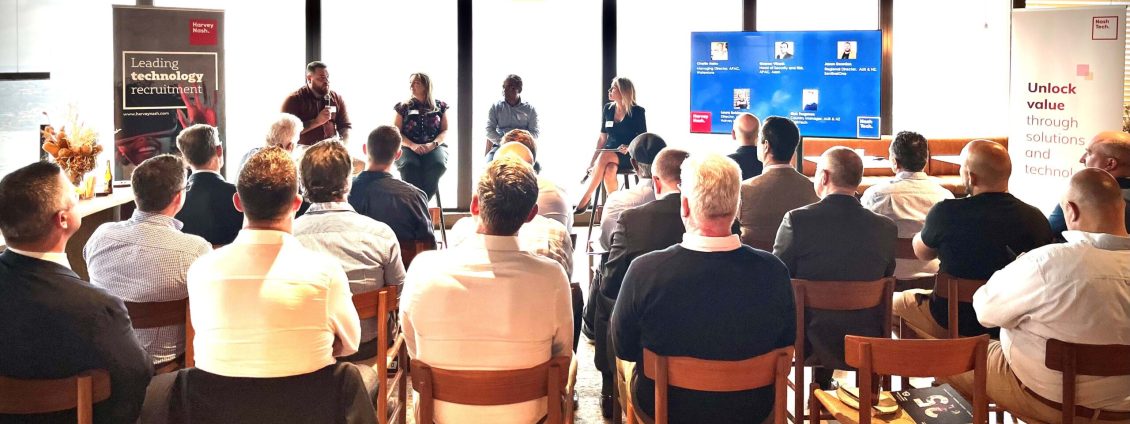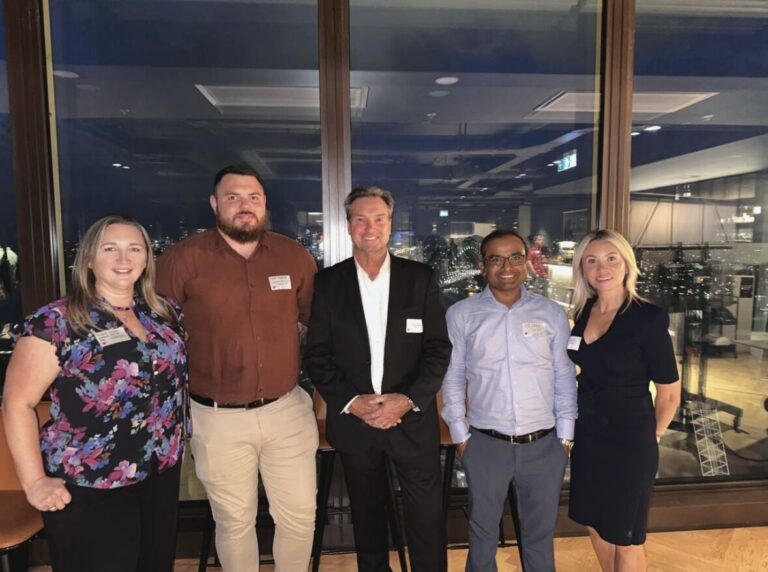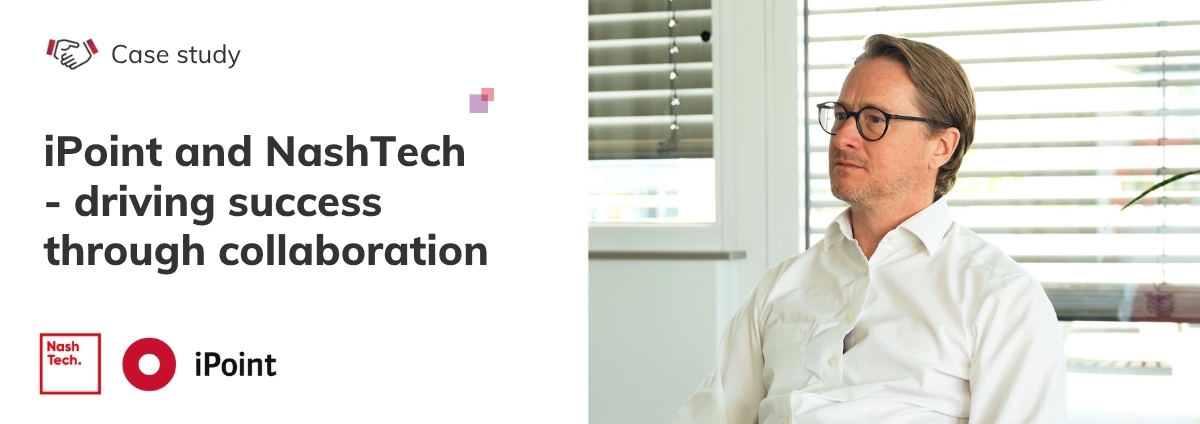NashTech Australia shares Digital Leadership insights at Sydney event 2023

Short on time? Here are the key takeaways:
- Working – Hybrid or Office? There is no ‘one size fits all’ approach. However, a forced five-day return to the office for everyone is counterproductive, disadvantages especially women, and can make people change companies.
- Cloud & data are the top two technologies providing the highest ROI, accounting for 70% and 49% respectively of the DLR respondents. But companies need to rethink their business and put strategies in place to leverage these technologies.
- AI, just like the industrial revolution, is an opportunity for humanity to advance our thinking, develop processes that are more efficient, and do things that were never thought of before or considered impossible so far. Repetitive or manual tasks could be handled by AI tools as their accuracy has improved from only 30% some years ago to over 90% nowadays.
On November 22nd, NashTech, together with its sister company, Harvey Nash, hosted an invite-only event to present the findings from the annual survey among tech leaders, the Digital Leadership Report (DLR). This year marked the 25th consecutive year that Nash Squared conducted this survey and allowed us to be looking forward at the future of technology while also looking back and analyse trends from the past.
NashTech Australia’s Country Manager, Rick Ferguson, opened the evening with the report’s insights from analysing over 160,000 data points provided by 2,104 respondents from 86 countries. Laura Robinson, Director at Harvey Nash Australia, then hosted an audience engaging panel discussion with Charlie Hales, Managing Director APAC at Waterstons, Guarav Vikash, Head of Security and Risk APAC at Axon, and Jason Duerden, Regional Director AUS & NZ at SentinelOne. She picked the hottest topics from the report to spark conversations around trends in AI, hybrid/remote/office working, cybersecurity, and data and dived deeper into what they mean for organisations and their employee and talent management.

From left to right: Charlie Hales, Managing Director APAC at Waterstons; Jason Duerden, Regional Director AUS & NZ at SentinelOne; Rick Ferguson, NashTech Australia’s Country Manager; Guarav Vikash, Head of Security and Risk APAC at Axon and Laura Robinson, Director at Harvey Nash Australia.
The below sections summarise most of the topics discussed by the panel and complement that by findings from the DLR.
Hybrid/Remote/Office Working
The DLR finds that, in general, the heat of the skill shortage as experienced during the pandemic has reduced while specific skillsets still remain scarce. The most popular route to fill gaps in talent is through direct hiring – speak to Laura for assistance – and the second most popular route is outsourcing – speak to Rick how NashTech can assistance in your case.
Recruitment may be down compared to the past years, but organisations now need to focus on retaining the talent they have. The panellists highlighted that their strategy is to hire for cultural fit and alignment with the company’s purpose and complement that with skill training as well as providing employee networks, councils, well-being initiatives, and flexible working models to help their employees not just to do a job but to thrive in their job. They have noticed employees value authentic care and flexible working arrangements that work for each individual. Interestingly, all panellists’ companies offer unlimited vacation to their employees, within rail guards.
There was a strong sense that there is no ‘one size fits all’ approach when it comes to either mandating five days in the office, allowing 100% remote working, or supporting a hybrid model in-between the extremes. It will depend on the role, the company culture, and the individual’s preferences and life circumstances that will make a model more successful long-term than another approach. However, there was an agreement that a forced five-day return to the office for everyone is counterproductive, disadvantages especially women, and can make people change companies. The DLR found that 9% of the companies participating in the survey required full-time return to the office.
Data and cloud
Data is everything to tech companies, but three quarters of the companies participating in the DLR find themselves to not effectively leveraging insights into their data. Companies (not only tech companies) need to know what data they have where and what they do with it, not just to comply with legislation but as a foundation for the ability in compiling meaningful, accurate and complete data analytics.
Companies need to think about what business questions they need to have answered and why to ensure the right data is surfaced. If that is in place and an understanding of the existing data landscape, the supporting technology to analyse and report is an easy bit to add in-between. Companies see this as a challenge while acknowledging data analytics as one of the top two deliverers of RoI.
There is a misconception about data security responsibility laying only with the cloud provider. Once that mindset shifts, a company can more powerfully leverage the cloud and its available services to incorporate in their products and how they are being built. It also facilitates the preparation for upcoming opportunities like Quantum Computing which is especially important for Australia as its ranked the fifth most important country for this technology. The cloud is considered the technology providing the highest RoI for tech companies.
AI and cybersecurity
The panel stated that regulation could be useful. However, current legislation can’t keep up with the speed of advancements in AI and to implement effective regulations, authorities must work with tech companies, not in isolation or ‘against’ them. We need ethical AI products and avoid products hitting the market too early only to get big money quickly. It was suggested for companies to understand what community they are serving as well as why and how they can respect and ensure that community’s safety and privacy, to reframe the terminology from ‘just’ security.
While AI has the potential to be used for cyber threats, it’s also used to counter those attacks. It’s an arms race, both sides constantly pushing each other for further advancements. It is not a question whether AI will replace anyone’s job, it’s rather a need to use AI to do one’s job. In addition, it can help to reduce job stress by e.g. taking away a lot of the overwhelm a security analyst may experience with constant systems alerts of which many could be handled by AI tools instead as their accuracy has improved from only 30% some years ago to over 90% nowadays.
It was highlighted that AI, just like the industrial revolution, is an opportunity for humanity to advance our thinking, develop processes that are more efficient and effective, and do things that were never thought of before or considered impossible so far. Currently, AI still shows inherit limitations and doesn’t reflect the full spectrum of ethnicity, beliefs, knowledge or human thinking. There is a responsibility to those AI tech companies to become inclusive. There was also a clear notion amongst the panel that AI will not become sentient in the very near future and it will still take a while for AI to accurately distinguish fried chicken from Labradoodles after all.
Find more details about these and many other topics in our Digital Leadership Report 2023 which you can download for free here.
Want to be put on the exclusive list for next year’s Digital Leadership Report? Email info@nashtechglobal.com
Suggested articles

Confident modernisation through the iPoint-NashTech partnership
NashTech implemented automation testing to overcome maintenance and management challenges associated with former NettingEQ service infrastructures and codebase.

VietinBank and NashTech – Award winning digital transformation with ‘Genie’ AI Chatbot
VietinBank, one of Vietnam’s largest and most prestigious banks and part of the nation’s “Big 4”, partnered with NashTech to drive digital transformation through the implementation of an advanced AI...
Building a long-term partnership with SLR Consulting
We worked with SLR to deliver a range of digital solutions including a sustainable digital business card platform, a smart room booking system for desks and parking, an automated supplier onboarding...
We help you understand your technology journey, navigate the complex world of data, digitise business process or provide a seamless user experience
- Topics:


